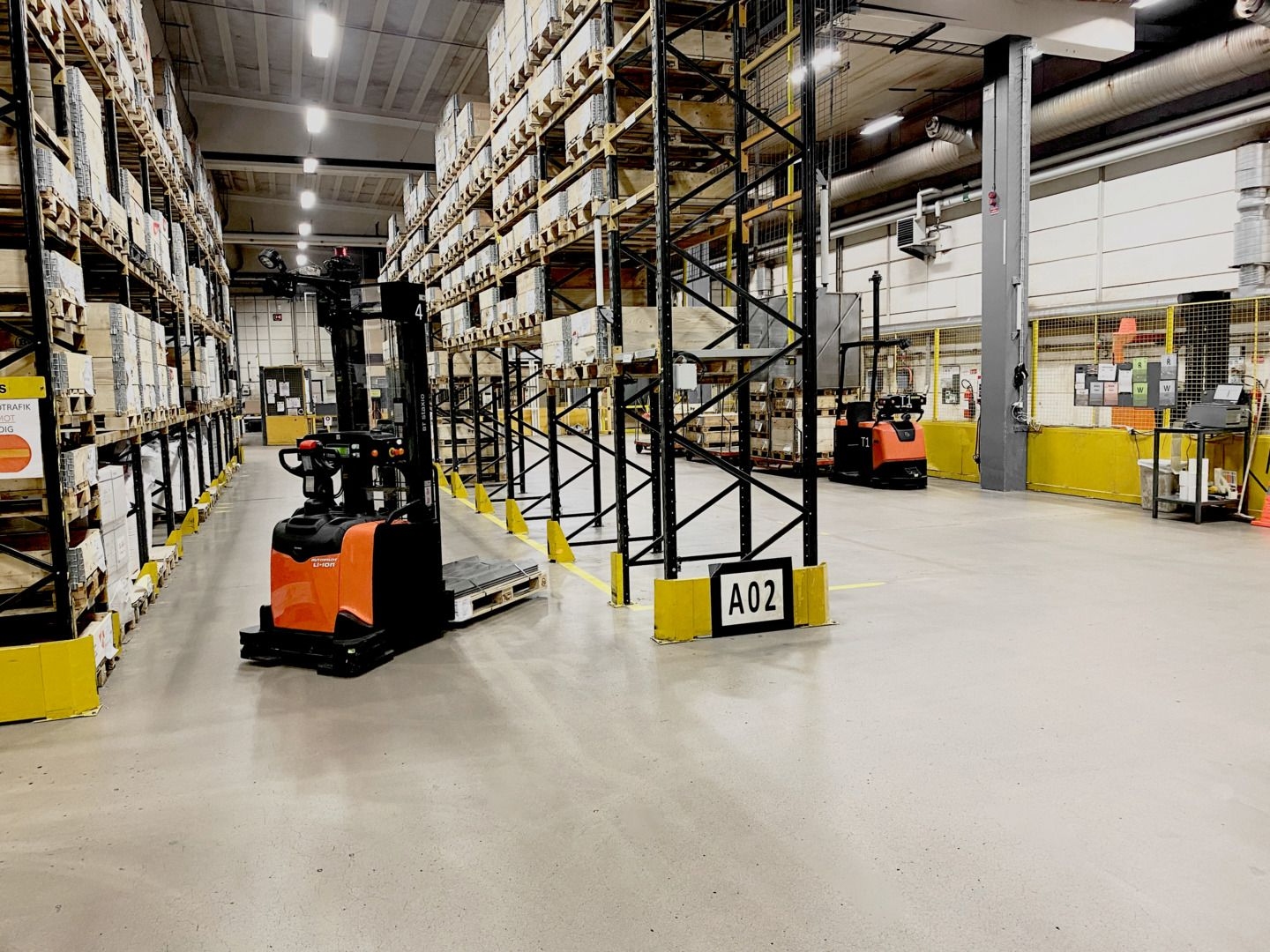Automated guided vehicle (AGV) are material handling solutions that work autonomously, transporting goods and materials through manufacturing facilities, warehouses or distribution centres, without the need for a driver or operator.
While they are not yet commonly used, the popularity of these machines is booming due to their ability to automate repetitive manual tasks, ensure visibility of material flow and reduce the risk of site downtime. AGVs have specific use-cases and, while they may not work for every business, they are becoming a popular option for countless organisations as they eliminate unnecessary processes, add unrealised value in areas that need it and develop a competitive edge.
The flow of material through a warehouse or manufacturing facility may seem complex, but it is something easily standardised and, essentially, programmable. AGVs provide the physical assets required in a systemic approach to warehouse operations, where common functions - such as material put away or replenishment - can be reworked into configurable modules, with actions delivered by AGVs rather than workers.
Essentially, AGVs help to separate the repetitive workflows from the unique ones.
Additionally, AGVs can be used to eliminate waste within warehouse operations, such as those time-consuming activities that take away energy and resources from others that need them more. AGVs and automation can be seen as part of a step-by-step process that can be made entirely flexible, fitting the bespoke needs of those automating.
A key focus of automated material handling is to make the entire process smoother, entering an environment of exceptional efficiency. Utilising AGVs is the best way of capturing this.
How do AGVs work?
AGVs are driverless vehicles. Onboard software guides their movement, helping them move along predefined paths and avoid obstacles, ensuring safety. There are many ways AGVs navigate through a site, but the two most efficient are reflector navigation and natural navigation:
On top of this, AGVs include built-in safety scanners, obstacle detection units, load sensors and vision cameras to prevent collisions and guarantee accurate and safe load handling.
AGVs take over from human operators and manual forklifts, conveyor systems or carts, handling and transporting large volumes of material. For example, you can use them when receiving raw materials in your warehouse, unloading those materials.
They can also be used to move those materials to production lines, among a wide variety of other uses, depending on the site’s needs. AGVs can be used for:
And they help add value to:
AGVs handle raw material and can be used for both partially completed goods and finished products. They can move work-in-progress materials from one workstation to another or different parts of a manufacturing facility, maintaining the flow of materials and products.
In contrast, a processing line that runs out of materials can stall or delay a manufacturing process. The AGV, alongside a centralised automation software, will keep track of material movement, ensuring a consistent supply is always available.
AGVs will also transport inventory from long-term storage to forward picking locations, making order picking far more efficient for employees. This also means shipping and deliveries will be much more accurate.
At first glance, AGVs will consistently guarantee increases in both efficiency and productivity, providing optimisation for an entire warehouse. They are programmable, predictable, reliable and aid in maintaining the pace of other tasks. Tasks human workers oversee and are provided with the correct goods and materials precisely when they need them.
Similarly, as they are automated, they are far less fallible than human workers. Reducing human error is a crucial way of improving efficiency and accuracy on the warehouse floor, helping to minimise loss and downtime, alongside capturing improved resource utilisation.
But efficiency increases are not the only benefits you can gain:
Improved safety for workers and visitors.
Top-of-the-line AGVs include a wide variety of safety features designed to keep trucks moving throughout a warehouse or distribution centre without impacting the safety of workers.
Reduced cost of errors.
Downtime, shipping errors and safety risks can all be costly. AGV robots help eliminate these costs by creating a consistent, visible and accurate working environment.
Agility and flexibility.
While it may feel inaccurate to describe a warehouse as a flexible working environment due to the rigid workflows necessary for production, AGVs do offer flexibility on-site.
With simple programming, variety in terms of the trucks on the market and complete scalability offered within the solution, onboarding AGVs means warehouse operations can be a little more proactive.
There are a wide variety of AGVs available on the market today. For example, warehouses can utilise:
Automated warehouse trucks.
Automated warehouse trucks are designed for automating repetitive pallet handling. They provide:
These types of trucks also allow for manual operation.
Automated tow trains.
Tow trains provide automated fork-free pallet and item handling. They are the perfect choice for just-in-time delivery.
Automated carts.
If a warehouse needs light goods handling, automated carts are the optimal choice. They are available in several load carrier options and are notable for their straightforward installation and programming.
Semi-automated shuttles.
Semi-automated shuttles provide high-density, deep storage solutions with an 80% space utilisation rate. They guarantee increased throughput and are completely ideal for coldstore operations.
AGVs provide a much-needed guarantee of efficiency and productivity gains within a warehouse environment. However, they are not always the right choice. To help you discover whether warehouse automation would work for your needs, we have developed a blueprint to help.
The Warehouse Automation Blueprint will help you determine if automation and AGVs would suit your specific scenario and solve any problems you may be facing, such as surplus labour or regular downtime. It also covers the key questions you must ask when searching for an AGV vendor, helping you sort through what is available on the market today and come to an informed decision.
View our Toyota AGV range here, for more information click here to contact us.

Toyota AGVs allow for minimised damage costs and improved labour efficiencies, while offering operators tasks with more added value.

